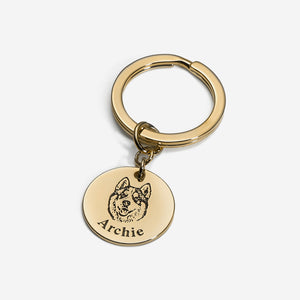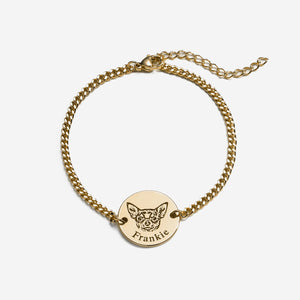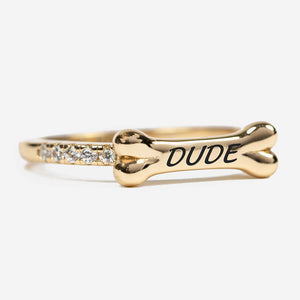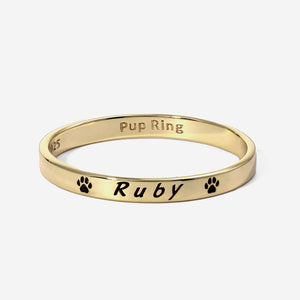While we all do our best to keep our dogs happy and healthy, sometimes things happen. Whether it’s an accident or a sudden illness, having the right tools and knowledge can help you prevent the worst outcome of a medical emergency. The prospect of learning first aid fo your pup may seem daunting, but this week we’ll break down everything you need to have and know to act in case of an emergency.
Of course as a quick disclaimer- I am not a vet, and first aid isn’t meant to be a substitute for professional care. First aid is meant to prevent further injury and stabilize a situation in an emergency until you can seek out professional care for your pup from a veterinarian.
First Aid Kit
Just like you should have a first aid kit for yourself, you should also have a first aid kit ready to go for your four-legged-friend. You can put this kit together yourself or find one at a local store or online. Many of the items in your pet first aid kit will be similar to your own, but you’ll also notice a few extra things specially prepared for your dog.
Wound care Prep- Latex gloves, Hand sanitizer, Alcohol swabs, Scissors, Tweezers
When caring for a wound, the first step is to sanitize and keep things clean. Good preparation can help a wound heal better and sooner. You should start by sanitizing your hands and putting on gloves to make sure you’re not introducing any extra germs to the wound. Use the scissors to trim fur away from the wound to make it easier to clean. If there are minor splinters, you can use tweezers to pull those out. Of course, if you have a dog with a face full of porcupine quills, don’t bother- take your dog to the vet who can provide appropriate painkillers, sedatives if needed, and any extra treatments that can get your dog on the road to recovery.
 Direct Wound Care- Cotton swabs, Antiseptics/Antibiotic ointment, Gauze and bandages, Hydrocortisone cream
Direct Wound Care- Cotton swabs, Antiseptics/Antibiotic ointment, Gauze and bandages, Hydrocortisone cream
If the wound you’re treating is major, press a bandage over it with even pressure to try to stop the bleeding. If the whole bandage is soaked, don’t remove it- place another on top of it. A major wound will need professional care as soon as possible. It should also be cleaned and closed by a professional, so don’t mess with the wound other than trying to stop bleeding and cover it up until you can get professional treatment for it.
For minor wounds, there is a little bit more initial treatment that you can do before heading to the vet. Clean the wound gently with soap and water, then apply continuous pressure until the bleeding stops. After that, apply your antibiotic ointment and a bandage. If the bandage soaks through, put another bandage on top rather than replacing the soaked bandage.
Finally, you should have a styptic powder or pencil on hand. It can stop bleeding very quickly, and is specifically very useful in the event that one of your dog’s claws gets split or trimmed too short. A dog’s claws have a fleshy area inside called the quick, somewhat like the skin under your fingernails, but it is densely packed with blood vessels. I’ve accidentally quicked Cookie before and it was not fun at all- blood all over my floors and carpets, and he also has been very wary of clippers ever since. Thanks to a small jar of styptic powder, almost as soon as I dipped his claw in it the bleeding stopped. I put a bandage over it to prevent Cookie from licking or chewing at it, and of course had to keep a very close eye on him for a while.
Medications- Hydrogen Peroxide, Medicine dropper, Benadryl
Certain medications can come in handy in a pinch. You should call your emergency vet before administering any medication that your dog is not prescribed, but having these on hand and ready to go is very important. Hydrogen Peroxide and a small dropper to administer it with can be used to induce vomiting in very specific circumstances. When I say very specific, I mean you absolutely should not use it unless you have an emergency vet on the phone who says “Yes, give them this much for this long and keep an eye out for this symptom.” Just like you would call poison control if a human ingested something dangerous, inducing vomiting in your dog can make things worse if done inappropriately. Cookie once ate an entire box of brownies and a container of tums, and in this case I was directed by my vet over the phone to give him a small dose, wait an amount of time, and give him another dose before he threw it up. Luckily it didn’t cause him to get majorly sick, he was just very unhappy with me, and I definitely learned my lesson about leaving things on the counter.
While Benadryl is not something you would typically use in an emergency situation, it can help ease anxiety or help your dog with allergies. I have occasionally needed to give Cookie benadryl for seasonal allergies. Your vet can help you determine if it is appropriate and what dosage your dog needs. It can also be used to help ease very minor anxiety in your dog in a pinch, and of course with your veterinarian’s direction. I mostly decided to include this in the list because it’s a human medicine that can have specific uses for your dog with the appropriate direction and approval by your vet.
Extra Items- Hot/cold packs, Small flashlight, Splints and tongue depressors, Muzzle/Cone/Carrier/Leash, Rectal thermometer, Lubricating jelly, Medical Records
 In a situation where your dog swallows something inappropriate, you can use a flashlight and tongue depressor to check for objects lodged in its mouth or throat. You can't just ask your dog to open wide- you'll need these tools to help you see exactly what's going on in there. In some situations you may be able to dislodge an object yourself, but if you can’t, obviously an emergency vet visit is appropriate. It’s not just large items either- something like a large splinter could get stuck in their mouth, and these items will make it much easier for you to assess the situation.
In a situation where your dog swallows something inappropriate, you can use a flashlight and tongue depressor to check for objects lodged in its mouth or throat. You can't just ask your dog to open wide- you'll need these tools to help you see exactly what's going on in there. In some situations you may be able to dislodge an object yourself, but if you can’t, obviously an emergency vet visit is appropriate. It’s not just large items either- something like a large splinter could get stuck in their mouth, and these items will make it much easier for you to assess the situation.
No matter how tame your pup is, a dog that is hurt, confused, or frightened can bite even their bestest friend. Having a muzzle and leash on hand can help you keep both you and your dog more safe and secure in an emergency. It is much easier to treat a dog that can’t bite or run away. Having a carrier available is also a must to help you transport your injured or sick pup to the vet as safely and quickly as possible.
Whether your dog is stuck in something, or something is stuck on your dog, some lubricating jelly can come handy in a pinch. A curious pup that sticks its head in a jar to get that last glob of goodness may find that it can’t get back out. Maybe your dog pokes its head through a hole in a fence and gets stuck. Having some sort of lubricant can make freeing your very unlucky pup from these situations much easier and much less dramatic.
While unpleasant and even gross-sounding, a rectal thermometer can tell you if a sick dog is in serious trouble. I know you don’t want to go poking things in places where the sun doesn’t shine, but it’s in your dog’s best interest sometimes. While you should probably take your dog to the vet if they are acting different than normal or looking sickly, if you determine your dog is running a fever, that can make the difference between scheduling a vet visit later in the week, or making an emergency trip right away. It’s for the greater good, I promise.
Splints and hot or cold packs can come in handy for blunt-force injuries. Depending on what happened, you’ll probably need to call your vet to find out the best course of action. The purpose of these items is to stabilize your dog and keep them as comfortable as possible before moving them to a carrier for a trip to the emergency vet.
You should keep a copy of your dog’s medical and vaccination records. Not only is it convenient to have for your own use, but a copy of your dog’s records can be useful if you have to visit a vet you’re not familiar with if they have a specific question about your dog’s medical history. It comes in handy too if you’re traveling and you come across a place, such as a daycare or hotel, where they may request proof of certain vaccinations.
Methods
In an emergency that requires immediate action you may need to know certain skills. You can find more detailed instructions, descriptions, videos, or even classes on these skills, but here is a brief overview of what it entails.
If your dog is choking on something you may need to perform a special version of the Heimlich Maneuver. This varies depending on the size of your dog. First you should look in your mouth and remove any object possible unless it is a bone- if something has punctured your dog’s throat you need to get to the vet ASAP, that’s not something you can fix.
For small dogs- Hold your dog in your lap on its back. Apply pressure right under the ribcage, pushing up in 5 pulses before rolling your dog onto its side to check for dislodged items, and repeat if needed.
For larger dogs- If standing, wrap your arms around them with your hands just underneath their ribs. With your hands in a first, push forward and up in 5 firm pulses and check their mouth for any dislodged objects. If your dog is laying in the floor, put one hand on their back and the other in the same below-ribs position, thrusting up and forward 5 times before checking for the dislodged object.
 After the object is removed you should visit the vet right away. Even though the most immediate danger has passed, choking can cause other injuries or issues that your vet needs to check for, such as damage to the throat, or determining if the lack of oxygen went long enough for your dog to require hospitalization.
After the object is removed you should visit the vet right away. Even though the most immediate danger has passed, choking can cause other injuries or issues that your vet needs to check for, such as damage to the throat, or determining if the lack of oxygen went long enough for your dog to require hospitalization.
CPR is similar in some ways to what you would do for a human. First you should check for and remove any obstructions. If large, close the dog’s mouth and give 2 big breaths through its nose. You should watch to see that their chest rises and falls. For small dogs, you can likely cover both the nose and the mouth, doing the same thing. For compressions, on a large dog it is the same as you would do for a human. For small dogs or bigger dogs with a funnel-shaped chest, lay them on their side. Compress the side of the rib cage, doing 60 per minute for dogs 60 pounds or more, and 120 for dogs that are under 10 pounds. Between those weights, do 80-100 compressions for each minute. For every 30 compressions, give 2 breaths. Of course, you should take your dog to an emergency vet right away for professional help as soon as they start to respond to the CPR.
Prevention
In the end, the very best thing that you can do is prevent accidents and injuries from happening in the first place. While you don’t have to hover over your dog every moment of the day, and you don’t want to overprotect your pup to the point that you prevent them from having healthy socialization and play, there are plenty of ways that you can prevent major accidents or injuries.
 Just like you would with a toddler, you should make sure that your home is puppy-proof (or curious adult-dog proof). Keep tempting objects away from curious chewers and teach your dog to know what objects are appropriate toys. If your dog is trying out a new toy or object like rawhide, you should supervise them to make sure that they don’t tear off any chunks or pieces that they can choke on.
Just like you would with a toddler, you should make sure that your home is puppy-proof (or curious adult-dog proof). Keep tempting objects away from curious chewers and teach your dog to know what objects are appropriate toys. If your dog is trying out a new toy or object like rawhide, you should supervise them to make sure that they don’t tear off any chunks or pieces that they can choke on.
When your dog is meeting new friends, you should be cautious. Don’t approach strange dogs, and even when meeting dogs you are personally familiar with, be careful. When introducing new dogs together, they should be closely supervised. Watch their body language and make sure they are comfortable together. Make sure that they take breaks alone to “cool off” and provide safe spaces where they can isolate if one dog gets tired or is beginning to feel irritated. Try to match dogs together that have similar energy levels. A totally hyper puppy and a big, tired, grumpy dog are obviously not an ideal mix and are more likely to snap at each other.
When playing outside, you should either keep your pup on a leash or in an enclosed area. No matter how well-trained you think your dog is, if they see something exciting, there’s a chance that they could dash off, unaware of danger such as a busy road or less-than-friendly animal. Make sure fenced-in areas don’t have holes that your dog can squeeze through. If you have a chicken coop in your fenced yard, don’t open the door to go in, even if you think you can close it before your dog slips in- don’t ask me why I have this specific example- I’m still too traumatized to talk about it. (Just kidding, I’ll tell you. Cookie zipped in past my mom one day and snatched one of her favorite chickens. I got it away from him and they were both fine, but I injured my hand in the commotion. I love Cookie but I was mad at him for a day or two after that!)
Now, should you find yourself in an emergency situation with your dog, you will be a little more prepared to take action. While first aid doesn’t replace the care of a veterinarian, it can make a difference in your pet’s recovery, or even save their life. I hope this week’s post helps you feel a little more confident when it comes to ensuring your dog’s well-being, and I look forward to writing for you again next week!







